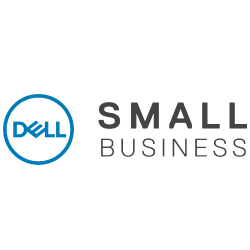
Dell Small Business
View Brand PublisherMastering finance – strategies to run a sustainable business
For every startup that succeeds, there are hundreds that fail despite being highly innovative and well-funded. The reasons are many, but most are related to financial mismanagement. If budding entrepreneurs paid half as much attention to the financial aspects of their startup as they do to the technological, marketing, valuation and fundraising aspects, their chances of survival and success would be far greater.

Here is a shortlist of things an entrepreneur should look into, to run a sustainable business.
Be clear about your revenue model
While much thought goes into the ‘idea’ that has captured the entrepreneur’s imagination, not enough attention is paid to the financials and the revenue model. Without a clear idea of how and from where the revenues are going to be generated, the venture would be a non-starter. Businesses cannot be run for long on investors’ money alone. It is okay during the gestation period but, soon, the business must generate enough revenues to at least meet the operational costs.
Work on profits and not just sales
In those cases where there is an understanding of the revenues, the entire focus is usually on increasing the top line. Entrepreneurs must never forget, however, that the business of running a business is not to generate sales but to make profit. Selling is a means towards an end, and the end is to make a decent, healthy profit. Chances are pretty strong that the business will go belly-up well before a white knight investor comes along to invest his millions impressed by the sales volume.
While drawing up the business plan, there should be complete clarity on how the business is going to make profits. A good practice is to find one customer willing to pay for your service and then, go out and find a thousand more like him/her.
Pay attention to your cash flow management
One of the first lessons that an entrepreneur learns is that there is no connection between the profit that a business earns and the bank balance it has. Always remember that successful businesses stand on two pillars: (1) the ability to generate profit, and (2) the ability to manage cash flow, effectively. You need to avoid focusing too heavily on profit. While that may sound like a contradiction to the previous point, it’s far from it. You look at your profit and break-even point in order to set benchmarks -- but you still need to maintain focus on cash-flow and spending. That doesn’t change just because you cross over into profitability.
Working capital is very essential
While evaluating the funds that a you need, it is relatively easy to understand the amount of fixed capital required. But often the working capital requirement is not clearly understood. Consequently, many such ventures are starved of the working capital for sustaining the operations on a day-to-day basis. Among those businesses that close down due to a shortage of funds, a large percentage of them do so due to a shortage of working capital.
Working capital is required primarily for three things:
- Purchasing materials and maintaining inventories (in case of organisations engaged in manufacturing / trading)
- Meeting day-to-day operational expenses
- Investing in your customers, where goods and services are sold on credit.
Never use short-term funds for long-term purposes
Startups must take great care to ensure that long-term funds are used only for long-term purposes and likewise for short term funds.
First, let’s be sure we know what is short in term and what is long in term. Long term debt is taken on for the acquisition of fixed assets such as equipment, infrastructure, facilities and acquisitions of companies or their assets. Short term debt is often composed of accounts payable to the trade or employees for expenses, payroll liabilities, accrued but unpaid vacations, customer deposits, and the portions of any loans due to be repaid within one year.
If start-ups pay heed to the finance management aspect of their business it will go a long way towards sustaining their venture and making it a success.
Create a thoughtful chart of accounts
Creating a well structured chart of accounts - a list of accounts in your accounting system - that you are going to use to account for the financial performance of the business is imperative to having a well functioning accounting system. A chart of accounts will feed into everything from managing the books, to budgeting and forecasting, and even support your dashboard. Think of the chart of accounts as the basic foundation of the accounting system. While it’s a bit geeky to talk about the chart of accounts, if your foundation isn’t solid, the structure you build on top of it will likewise be unstable. Once you establish a chart of accounts, you should control changes to it strictly.
Develop and Iterate Your Financial Plan
First, ensure your financial plan is structured consistently with your chart of accounts. Second, have input from the entire senior management team. Once created, frequently evaluate whether your plan is still relevant. You may find a number of your assumptions prove to be wrong. Early stage companies should plan on revising their financial plans a minimum of every six months.
Understand the Impact of Your Decisions to Revenues and Expenses
Is that recent affiliate agreement actually paying off as you had hoped? When presented with two product development opportunities to meet customer needs, have you carefully run the numbers and made sound assumptions to know which is the better investment of your team’s time? Are you considering the hidden costs when signing a new lease, or hiring that next employee? These are all important financial decisions, and many times, the future of your business can hinge upon even just one of them.
Get a financial mentor
Obvious, you say? But clearly important. Especially having an informed second opinion of someone who’s managed a startup can be incredibly helpful in making these decisions, and in determining the best allocation of funds. A financial mentor is crucial when it come to knowing your cap table or having a handle on your burn rate.
Get Connected Financial Tools
Over the last 10 years there’s been an emergence of financial management tools that are helping organizations with everything from financial reporting to billing to payroll. Save yourself time, resources, and headaches by working with tools that play well together and are managed from the cloud. Tools like Gusto for payroll, Bill.com for billing and invoicing, and Fathom for financial reporting can be cost effective and help you scale for a while. Be sure to determine the specific needs of your organization and find the tools that best satisfy those needs.
Dell: providing financially sensible tech solutions for startups
Dell’s Small Business Technology Advisors are available and ready to help with your tech questions so you can focus on running your business. From selecting the right systems to incorporating servers or creating networks for employees and clients near and far, they can make managing your technology easy - and the costs, economically. Get in touch with a Small Business Advisor here.
This article is part of the Dell Startup Academy series. Read more such articles here.
Go to the Dell on YourStory microsite.







